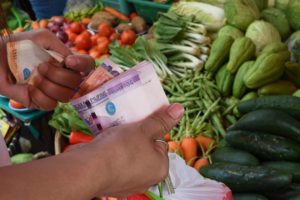Expect prices of basic goods and services in the Philippine economy to inch up this year—as the inflation rate continues to “normalize”—followed by a likely easing in 2021, the central bank chief said on Friday.
Despite this, the country’s average inflation rate for 2020 and 2021 will almost certainly fall within the government’s forecast range of 2-4 percentage points, according to Bangko Sentral ng Pilipinas (BSP) Governor Benjamin Diokno.
“Upside risks to inflation over the near term emanate mainly from potential volatility in international oil prices amid geopolitical tensions in the Middle East as well as the potential impact of recent weather disturbances and natural hazards on domestic food prices,” he said at a briefing.
“However, uncertainty over trade policies in major economies continue to weigh down on global economic activity, which could mitigate upward pressures on commodity prices,” Diokno added.
The central bank is coming off a strong year of fighting inflation where it successfully managed to keep consumer prices in check, following the extreme price volatility experienced in the previous year.
Year-to-date inflation settled well within the target range in the fourth quarter of 2019. Year-on-year headline inflation eased to 1.6 percent in the fourth quarter from 1.7 percent in the previous quarter.
This brought the year-to-date average inflation to 2.5 percent, well within the national government’s announced target range of 3 percent, plus or minus 1 percentage point for the year.
Inflation slowed down slightly during the quarter due mainly to lower food and non-food inflation. Likewise, core inflation slowed to 2.7 percent in the fourth quarter of 2019 from 2.9 percent in the previous quarter. Two of the three alternative core inflation measures computed by the BSP also eased in the fourth quarter relative to the previous quarter in 2019.
Analysts expect the central bank’s Monetary Board to cut interest rates as early as their first meeting on Feb. 6, in an effort to jumpstart economic activity, following the 5.9 percent gross domestic product growth rate for 2019.
At present, the central bank’s key interest rate—which banks use as a guide for their own commercial loan pricing—stands at 4 percent.
“Going forward, the BSP will continue to monitor developments that could affect the inflation outlook and domestic demand conditions to ensure that the monetary policy stance remains consistent with its price and financial stability objectives,” the central bank chief said.


